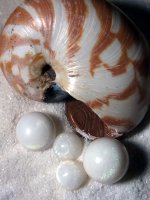surely that is biology and paleontology? And possibly physics...
Astronomy and biology. According to NASA web info, during the 90s
bioastronomy was the leading term proposed as an overdue update to
exobiology.
Astrobiology achieved final consensus around the work of Ward (paleontologist/biologist) and Brownlee (astronomer/physicist) at University of Washington in the 1990s, work summarized in the iconic book
Rare Earth: Why Complex Life Is Uncommon in the Universe (2000), mentioned earlier in this thread.
The interdisciplinary scope of astrobiology includes the full range of physics, paleontology, geology, philosophy?you name it! My read on this
?ber science is that earth and all life on earth (especially complex life) are inevitably doomed by natural cycles?and that as humans, conservation holds the purpose of maximizing our lifespan as a species to the extent that we are able to discover and move to a suitable alternative habitat in order to begin anew before it's too late.
Nautilus is an animal that has survived, in very nearly its present state, every major species extinction event since the advent of complex life and is considered a living fossil. Its many mysteries and potential for learning keep the most prominent specialists (Ward, Checa, et al) in a state of continuous wonder. This pearl business has them buzzing, not for the pearls, but for what stubborn secrets they may yet reveal.


